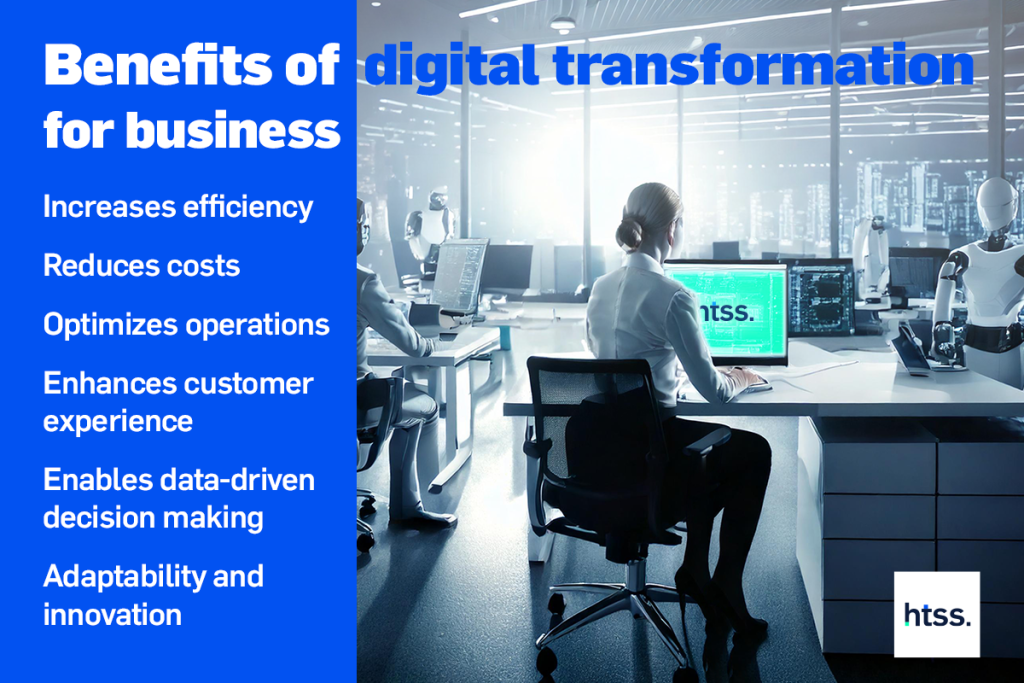Digital Transformation has become an essential capability for businesses of all sizes and industries. Today, Digital Transformation does not refer to only adopting new technologies, but also about revitalising the mode of operation for organizations; the concept affects every aspect of a business. What does this process entail, and how can organizations navigate the complexities that come with it?
What is Digital Transformation and why is it essential?
Digital transformation refers to the integration of digital technologies into all aspects of a company’s operations. Beyond the implementation of new tools, such transformation can include the revamping of business models and adapting to new market trends. Digital Transformation is essential in the current landscape. Businesses that resist it, may struggle to keep pace with the evolving manner of expectations and market dynamics. The goal with this transformation is to leverage technology and create new growth opportunities, becoming more adaptive and future proof.
Benefits of Digital Transformation for Businesses
General Enhancements
Businesses that successfully embrace the digital transformation shift often see substantial improvements in efficiency, customer satisfaction, and profitability. Through the digitalisation of processes and the utilisation of data analytics, businesses are able to strengthen their competencies, as well as optimize operations. Additionally, technology enables businesses to provide more personalized and intuitive customer experiences.

Flexibility
Digital transformation empowers businesses to be more flexible. With the ability to pivot quickly in response to market changes, companies can explore new business models and adapt their strategies based on real-time AI and data driven insights.
Data Driven Insights
As mentioned, data plays a critical role in this transformation. Even more so now, the collection and analysis of information is quintessential in the quest to make informed decisions, identify patterns and trends that are not detectable with conventional methods of predicition. This transformation that is data-driven drives growth and innovation.
Stages of Digital Transformation
The first step toward successful digital transformation is to examine your company’s present state, which includes reviewing existing processes, technologies, and resources to find areas for improvement. You should also identify your company’s long-term objectives and how digital transformation might help you achieve them.
Next, firms must create a digital transformation strategy that is consistent with overarching company objectives and prioritizes areas with the most potential for impact.
Once the plan is in place, organizations may move on to the implementation phase, in which they adopt the essential technologies and processes while ensuring that workers are properly trained.
Finally, continual monitoring and optimization are essential because digital transformation is an ongoing process. Companies must regularly review the performance of their initiatives and make required changes.
How to Implement a Successful Digital Transformation Strategy
A successful digital transformation strategy demands careful preparation and strong leadership support. Leaders must be completely committed to the process, as their participation is critical for driving change and cultivating an innovation-friendly culture.
Stakeholders should be the primary focus during this process. Digital tools may help firms understand stakeholder demands and habits, allowing them to provide personalized and relevant experiences
Investing in personnel development is also critical to success. Employees must be equipped to use new digital tools and platforms. Continuous training and a culture of innovation will enable employees to accept new technology and contribute to the company’s digital expansion.
Technologies that can help digitally transform your business
Digital transformation is a common and often necessary method used by companies to stay competitive. Here are some key technologies that can help you digitally transform your business:
RPA
Robotic process automation is a technology that enables the automation of repetitive and rules-based tasks. This not only reduces human error but also process execution time, allowing staff to focus on complex and strategic business activities.
Low-code
Low-code development platforms enable rapid production of software applications without sophisticated programming skills. These platforms use graphical user interfaces and standardized workflows, facilitating the creation of new applications. Low-code can accelerate creativity and minimize reliance on technical teams during the development of software solutions.
Chatbots
Chatbots are artificial intelligence systems that interact with customers or employees, either via text or voice. They can answer frequently asked questions, help fulfill orders and provide basic technical support. Implementing a chatbot can greatly improve the customer experience through constant assistance.
AI and ML
Artificial intelligence and machine learning are key technologies driving transformation. These tools help businesses automate repetitive tasks, analyze large data sets, and deliver personalized insights. These technologies are highly adaptable with the ability to help create smarter workflows.


































